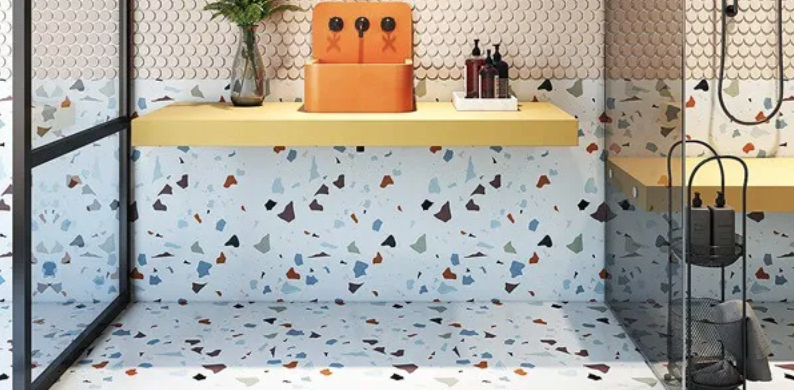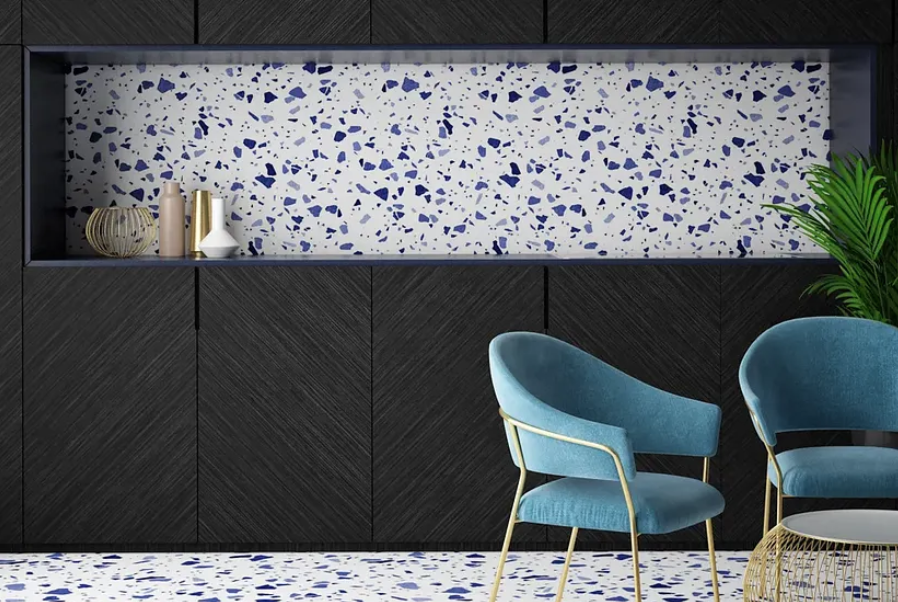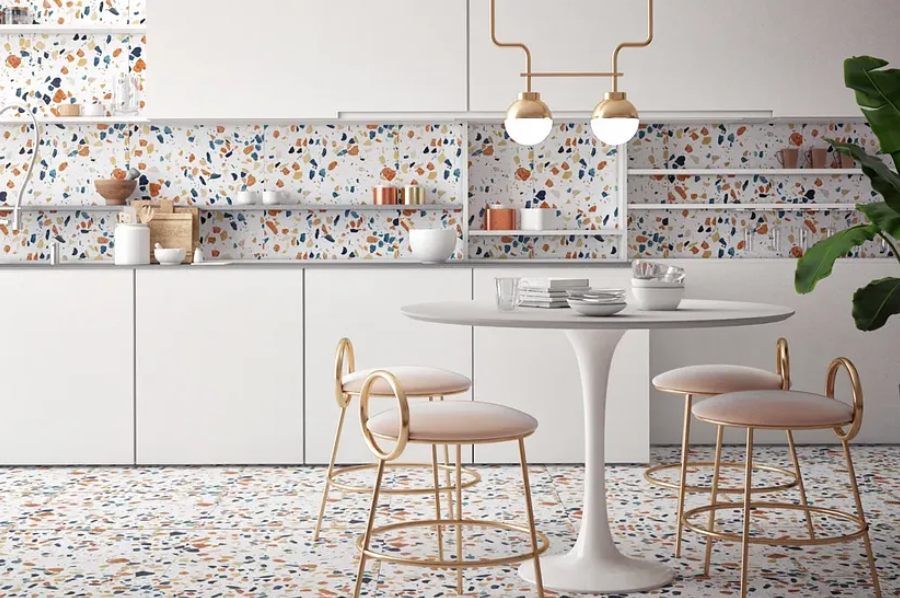2050 Sustainable Materials Series: Terrazzo

So what's Terrazzo, actually?
A composite material of marble chippings set into cement, terrazzo originated in 16th-century Italy as a way to reuse stone offcuts, hence the Mediterranean feel it brings along with it.
Terrazzo is a combination of sand, water, and cement with a mixture of ground minerals or wasted materials — such as marble, granite, quartz or plastic — and can be applied to all surfaces of any shape or orientation, vertical or horizontal. The versatile colour and design can go from bold and bright to elegant and classic.

 Historically, it is one of the very first recycled flooring systems in existence.
Historically, it is one of the very first recycled flooring systems in existence.
Among all other flooring systems in the market today, terrazzo flooring is regarded as one of the most sustainable and environmentally friendly solutions in its floor/wall finishes category, primarily due to its composition.
You can throw any waste material in the mix
It has the capability to transform the remains of architectural debris into stunning new surfaces for architecture and design. The use of these post-consumer composites can include anything from glass, to stone, or even plastic debris, making it a leader when it comes to waste management and minimisation. Every scrapped material is processed and added into the mix, creating uniquely designed patterns and colours while enhancing flexibility, adaptability, but above all creativity for designers.
How long does it last?
Longevity, durability and minimal maintenance requirements are some of its key characteristics, often lasting as long as the structure it resides in. In addition, it offers the capability to be refinished repeatedly, further minimising construction works, tenant disruption or the need to replace any materials.

Wider key benefits
Uniqueness and authenticity
Sustainability goes beyond merely using recycled resources. As with marble and natural stone, the speckled pattern on each piece of terrazzo is one of a kind, which meets the desire for uniqueness and authenticity. At the same time, terrazzo decor, floors and furniture can be combined with many different styles and materials.
Embodied energy
Terrazzo is composed of naturally occurring aggregates, recycled glass, plastic, or oyster shell, and a processed cement or epoxy binder. The binder consists of 30 per cent of the volume of the terrazzo. Initial life-cycle assessments on embodied carbon appear favourable due to the longevity of the floor and its low energy use for maintenance.
Indoor air quality
Both cement and epoxy matrix floor systems are comprised of zero volatile organic compounds (VOC) materials. Terrazzo exhibits little or no off-gassing over the lifetime of the cured floor. The nonporous, cleanable terrazzo finish does not support microbial growth, nor allows moisture to accumulate, helping to maintain a mould-free environment and improve indoor air quality significantly.
Application
Terrazzo is used as both an interior and exterior finish easily. Portland Cement and polyacrylate matrix terrazzo can be used for both interior and exterior applications. Also, a particular style of terrazzo known as “rustic terrazzo” is frequently used for outdoor applications; it has a rough surface for added slip resistance. It is either poured in situ by hand or precast into blocks that can be cut to size. You can also buy it as ready-made tiles, easy to apply straight to floors and walls without requiring specific training or specific technical installation skills.
Low cost
Damaged or worn terrazzo can usually be matched, repaired, and refurbished at a fraction of the cost of replacing conventional flooring.
Why use terrazzo, then?
Despite depending on different finishing techniques to present an aesthetically attractive appearance, terrazzo is considered a sustainable and less costly alternative to conventional tiling materials that allows for use-cases in multiple environments, both interior and exterior.
Further to the wider key benefits outlined above, it also offers the following:
- It has a high resistance to abrasion, shock and wear.
- It has a high degree of impermeability, due to the polishing process.
- It is easy to clean.
- It can be sourced anywhere in the world, enabling regional characteristics to each design.
Panchami Pandharikar, Environmental Designer
Terrazzo products on 2050 Materials
The 2050 Materials platform is now publicly available, offering data on tens of different terrazzo products (and hundreds of others) to an extensive group of key specifiers actively using the platform on a daily basis.
Visit it, try it out, and list your products here:
2050 Materials Platform

Related articles

Climate-Resilient Materials for the Built Environment: A Data-Centred Prime
As climate volatility intensifies, resilience metrics are fast becoming as critical as carbon data in material selection. This article outlines why adaptation is now a design imperative, how materials can be evaluated through a systems lens, and what KPIs project teams should demand. From self-healing concrete to fire-rated façades, we present a structured taxonomy of resilient materials, explain how to embed this intelligence into digital design workflows, and propose next steps for specification, benchmarking, and procurement.
Read more
The Most Interesting Low Carbon Products in Office Design
In this article and collection, we highlight 11 outstanding products that contribute to a lower carbon footprint in office design.
Read more
Top Low Carbon Building Boards: Performance, Benefits, and Use Cases
The building boards highlighted in this article and collection showcase low-carbon innovation in modern construction.
Read more